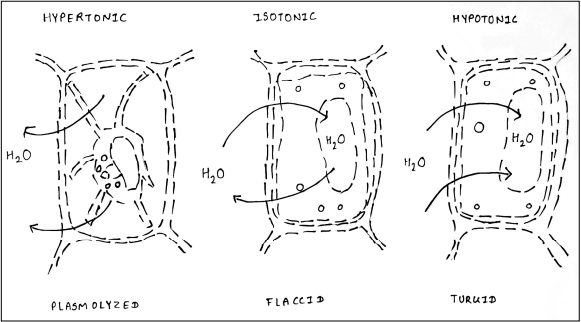pH indicates the concentration of hydrogen ions (H+) of any solution. The Hydrogen ions are protons hence, it is also the measurement of protons in solution. H+ ion concentration is inversely related to pH scale. Low pH means high H+ concentration & high pH means low H+ concentration. The pH scale range from 0 to 14. Below 7, the solution is acidic, at 7 it is neutral and above 7, the solution is alkaline.
The hydrogen ion concentration is one of the vital physical requirement for living growth. pH affects the bacterial growth. The cell need optimum pH for carrying its biochemical and molecular process. The microbial cells are evolved and have developed the mechanism for maintaining the intracellular pH. The research have found that the bacteria forms biofilm that inhibits entry of extra H+ or uses buffer to maintain physiological pH. The optimum pH varies from bacterial species to species. And hence, this parameter has been used for classifying the bacteria.
Based on the difference in the favourble H+ ions concentration, the microbes are classified as –
- Acidophiles – Loves high H+ ions concentration and hence grows below pH 5.5.
- Basophiles/Alkalophiles – Loves alkaline environment and hence grows above 8.5 pH
- Neutrophiles – They tend to grow around neutral pH i.e. from 5.5 to 8.5 pH. Neutrophiles are mostly pathogenic for us because our body pH also ranges in the same.

Principle-
Bacteria can only live, grow and multiply in certain range of physical environment. pH is of the factor that influences the bacterial growth. The bacteria are sensitive to pH because it affects the catalytic ability of enzymes and it also alters the ionic charge of many biomolecules affecting the metabolic reactions.
Materials & Methods-
- Bacterial culture
- Nutrient media
- Inoculating loop
- Conical flask
- Petri plates
- Alcohol
Procedure –
- Prepare different Nutrient media of varying pH (3, 4, 5, 6, 7, 8, 9, 10) in conical flasks as per the standard procedure.
- Dispense the media in petri plates.
- Sterilize the media in Autoclave.
- Allow the media to cool down to room temperature.
- Inoculate the bacterial culture (E. coli) in different media of varying pH (3, 4, 5, 6, 7, 8, 9, 10).
- Incubate the inoculated culture for 24 hours.
- Observe the bacterial growth in all the media.
Observation –
The E.coli was able to grow in the nutrient media of pH 5, 6, 7, 8 and 9.
Conclusion –
E.coli can grow in the range of pH from 5 to 9.
References –


